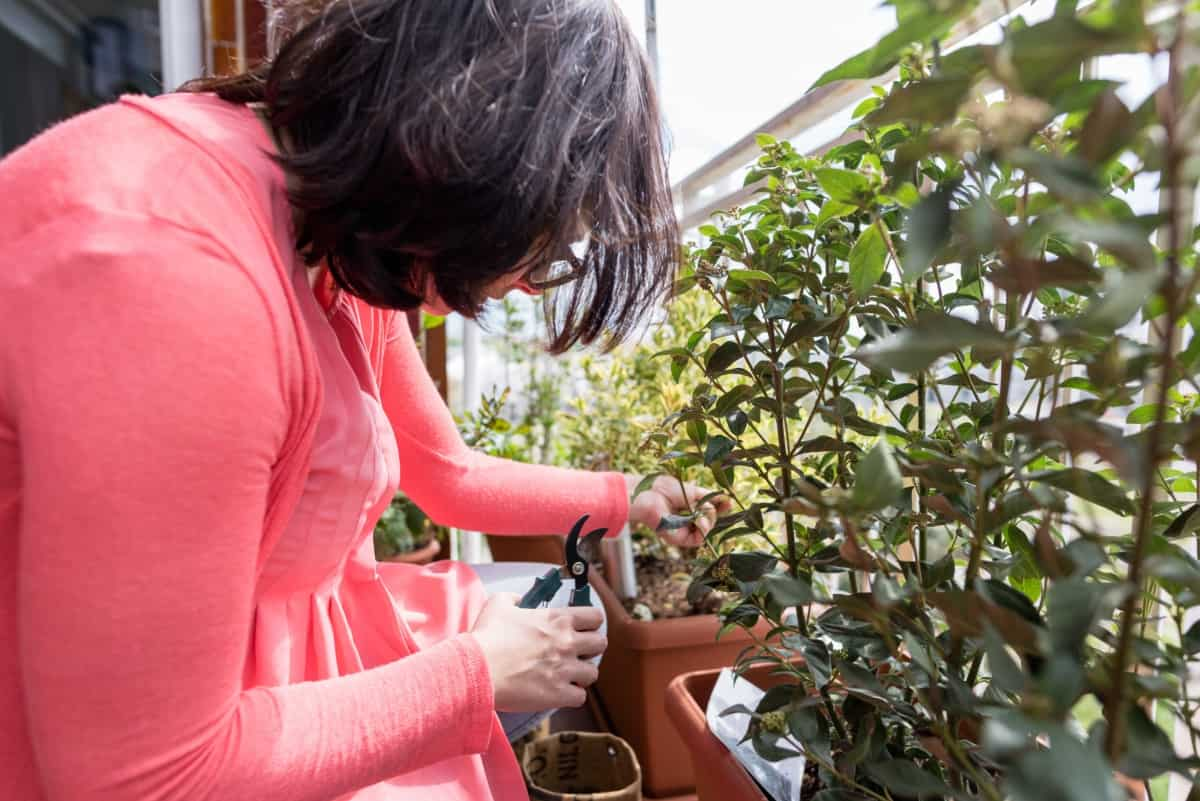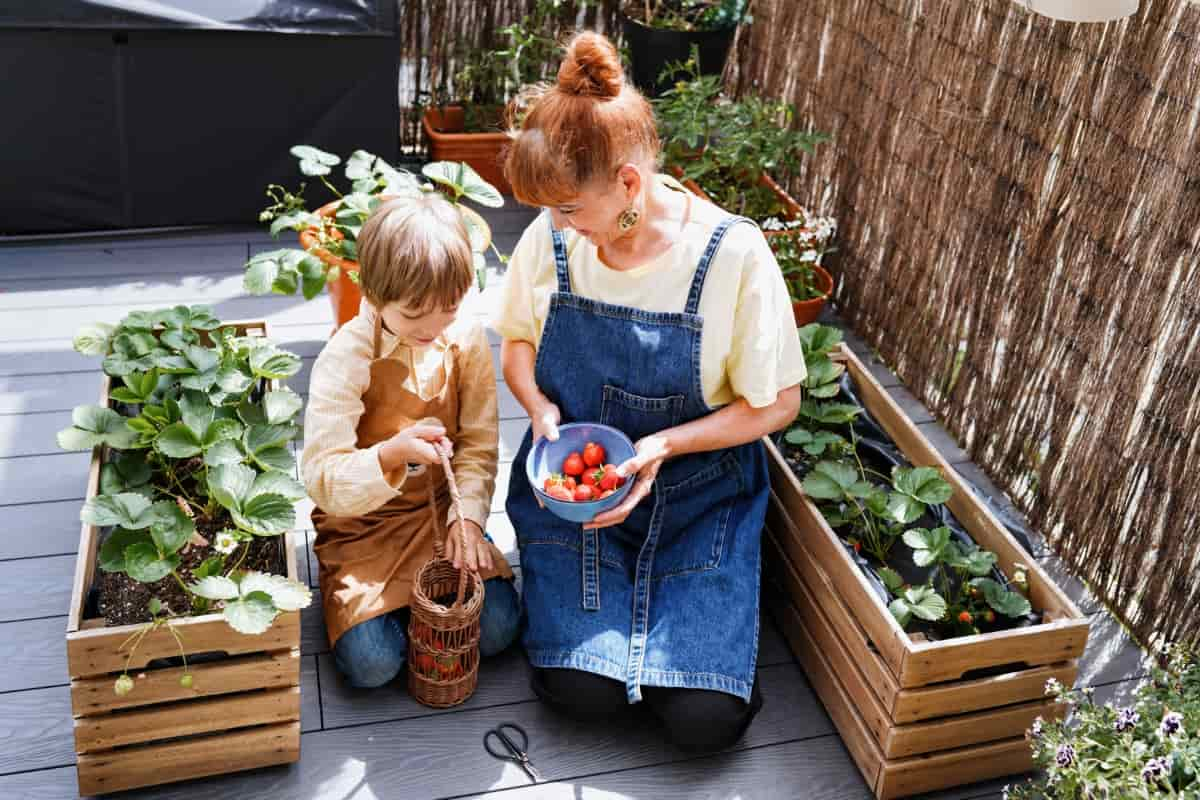Gardeners new to gardening may find it challenging to keep plants alive, indoors or outdoors. A plant can die for several reasons, but there are some basic preventive actions you can do to keep it alive and thriving. Things can still go wrong once the plants are in the container or transplanted into a larger pot for growing on the terrace.

There may be some obvious symptoms when examining the sick or dead plant, but others may leave you scratching your head. These conditions or situations can adversely affect plants’ health and well-being and, if left unchecked, could cause them to die.
9 Causes of Dying Plants on Terrace
Due to Unsuitable Soil
A well-drained loam is the best soil for growing most plants in. Ensure that the potting mix you select for your container is of good quality. There is a likelihood that most plants will have difficulty growing in soil that is sandy, poorly drained, or too shallow, particularly if it is newly planted. If the soil is hard to dig, can’t keep moist, or is very wet, it is important to improve it before planting.
Due to Improper Sunlight
Improper sunlight may also be to blame for your plants’ death. There are different requirements for the sun for each plant. Direct sunlight will benefit some, while shade will be best for others. Know what amount of sunlight your plant prefers. Tomato plants, for example, thrive in high sun, while pepper plants and decorative plants do best in partial sun. Lilies, for example, are more delicate plants that will thrive in a shaded environment. You can grow healthy plants on your terrace once you arrange them so they receive sunlight daily.
Due to Overwatering
Gardeners who are new to gardening often overwater their plants. When they see wilting or yellowing leaves, they pull out the hose and water away without checking the soil moisture. Yellowing and wilting leaves can sometimes be signs of root rot due to overwatering, not too little. Terrace gardens that receive too much water can easily die.
To ensure your plants receive enough water, you should check them periodically throughout the week. Make sure the soil is dry before reaching for the water. The best way to avoid overwatering your terrace garden is to test the soil around it. Stick your finger into the soil of each container when container gardening. You should water your plants if there is no moisture on them.
Due to Underwatering
A plant on your terrace can also die quickly if it is underwatered and overwatered. Despite the smaller amount of soil and faster evaporation rate when sitting in the sun, container plants require frequent watering than those in a terrace garden. The leaves of your plant will become wilted and crinkled if they are underwatered, or they may fall off. Adding water to the center of the pot at the plant’s base and letting it soak in for a few minutes is one of the best methods to ensure your plants get enough water. This method should be repeated until the entire soil surface is moist but not soaked.
If Plants Are Planted Too Deeply or Not Deeply Enough
The plant should always be planted at the same depth as it was in its terrace garden. An insufficiently deep or shallow planting hole will cause the plant not to establish itself and die slowly. In some cases, plants that are planted too deeply won’t die, but they will also not grow. When planting, make sure the plant is well watered.
In case you missed it: 9 Sustainable Gardening Ideas: At Home for Beginners

Due to Harsh Elements
Plants cannot defend against the harsh elements of nature. They can’t protect their leaves and soft stems from hail storms. They may suffer catastrophic damage as a result. Covering up your more delicate garden plants with sacking or plastic sheets is a good idea, depending on the weather. As a result, it protects your plants against harsh weather conditions.
Due to Too Much/Too Little Fertilizer
Overdosing of fertilizers/compost on your plant is a common cause of death, especially for new plants. A smaller amount of fertilizer is needed for young plants. The fertilizer must be mixed well with the soil; otherwise, pure concentrated fertilizer may choke the plant and cause it to die. To keep your plant healthy, you should regularly fertilize it with compost – at least once every 2-3 months. The plant can wilt and die if it does not receive enough nutrition. Get to know the different kinds of organic fertilizers for healthy plants.
If Your Container Isn’t Big Enough
It is important to allow the right container size for your chosen plant to thrive in its environment to create a successful terrace garden. Looking at your plant will tell you if it’s too cramped in its pot. The plant probably won’t thrive in a smaller container if it grows out of the sides in all directions and appears pushed into it. If you buy a plant in a plastic pot, repot it. In most cases, plants sold in plastic pots are already too large for their first pot. Ensure your new plant has a new home immediately to avoid potential problems.
The Plants are Afflicted with Diseases or Infestations
After thoroughly considering all of the above, you may be experiencing problems with your plants because insects are attacking them. We don’t always know what to do. Otherwise, the signs are very obvious, and you may have noticed them already without even realizing it. Inspect the soil and the appearance of your plants for changes, like tiny holes in the leaves or strange color changes on various parts of the plant. Plants shouldn’t be grown in the same area, as most diseases and bacteria can spread quickly, wiping out your balcony before you have a chance to take action.
In case you missed it: 7 Causes of Dying Plants in Winter and How to Fix Them?

Conclusion
We have provided a few tips on fixing a dying plant on the terrace if you start growing plants without knowing their basic requirements and growing conditions. We hope you find these tricks and suggestions helpful. You can bring your terrace plant back to health by understanding what’s wrong with it, ultimately creating a beautiful plant for your terrace.
- Feed Your Flock for Less: Top 10 Tips to Save on Chicken Feed
- Ultimate Guide to Ossabaw Island Hog: Breeding, Raising, Diet, and Care
- Hatching Answers: The Top 10 Reasons Your Chickens Aren’t Laying Eggs
- Eggs and Economics: Breaking Down the Cost of Raising Backyard Chickens
- Defend Your Greens: Proven Methods to Keep Iguanas Out of Your Garden
- Ultimate Guide to Cinnamon Queen Chicken: A Comprehensive Guide for Beginners
- Ultimate Guide to California Tan Chicken: Breeding, Raising, Diet, Egg-Production and Care
- Ultimate Guide to Marsh Daisy Chicken: Breeding, Raising, Diet, and Care
- 10 Types of Chicken Farming Businesses You Can Start for Profits